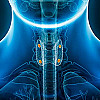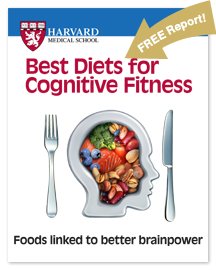Hemorrhoids and what to do about them
What causes internal and external hemorrhoids, and simple ways to treat them.
- Reviewed by Howard E. LeWine, MD, Chief Medical Editor, Harvard Health Publishing

Hemorrhoids are usually caused by increased pressure due to pregnancy, being overweight, or straining during bowel movements. By midlife, hemorrhoids often become an ongoing complaint. By age 50, about half the population has experienced one or more of the classic symptoms, which include rectal pain, itching, bleeding, and possibly prolapse (hemorrhoids that protrude through the anal canal). Although hemorrhoids are rarely dangerous, they can be a recurrent and painful intrusion. Fortunately, there's a lot we can do about hemorrhoids.
What are hemorrhoids?
In one sense, everyone has hemorrhoids (or piles), the pillow-like clusters of veins that lie just beneath the mucous membranes lining the lowest part of the rectum and the anus. The condition most of us call hemorrhoids (or piles) develops when those veins become swollen and distended, like varicose veins in the legs. Because the blood vessels involved must continually battle gravity to get blood back up to the heart, some people believe hemorrhoids are part of the price we pay for being upright creatures.
There are two kinds of hemorrhoids: internal hemorrhoids, which occur in the lower rectum, and external hemorrhoids, which develop under the skin around the anus. External hemorrhoids are the most uncomfortable, because the overlying skin becomes irritated and erodes. If a blood clot forms inside an external hemorrhoid, the pain can be sudden and severe. You might feel or see a lump around the anus. The clot usually dissolves, leaving excess skin (a skin tag), which may itch or become irritated.
Internal hemorrhoids are typically painless, even when they produce bleeding. You might, for example, see bright red blood on the toilet paper or dripping into the toilet bowl. Internal hemorrhoids may also prolapse, or extend beyond the anus, causing several potential problems. When a hemorrhoid protrudes, it can collect small amounts of mucus and tiny stool particles that may cause an irritation called pruritus ani. Wiping constantly to try to relieve the itching can worsen the problem.
Internal and external hemorrhoids
Hemorrhoids are distended blood vessels that form either externally (around the anus) or internally (in the lower rectum). |
What causes hemorrhoids?
Traditionally, hemorrhoids are associated with chronic constipation, straining during bowel movements, and prolonged sitting on the toilet — all of which interfere with blood flow to and from the area, causing it to pool and enlarge the vessels. This also explains why hemorrhoids are common during pregnancy, when the enlarging uterus presses on the veins.
More recent studies show that patients with hemorrhoids tend to have a higher resting anal canal tone — that is, the smooth muscle of the anal canal tends to be tighter than average (even when not straining). Constipation adds to these troubles, because straining during a bowel movement increases pressure in the anal canal and pushes the hemorrhoids against the sphincter muscle. Finally, the connective tissues that support and hold hemorrhoids in place can weaken with age, causing hemorrhoids to bulge and prolapse.
Diagnosing hemorrhoids
Hemorrhoids can usually be diagnosed from a simple medical history and physical exam. External hemorrhoids are generally apparent, especially if a blood clot has formed. Your clinician may perform a digital rectal exam to check for blood in the stool. She or he may also examine the anal canal with an anoscope, a short plastic tube inserted into the rectum with illumination. If there's evidence of rectal bleeding or microscopic blood in the stool, flexible sigmoidoscopy or colonoscopy may be performed to rule out other causes of bleeding, such as colorectal polyps or cancer, especially in people over age 45.
Hemorrhoid treatment
Dramatic relief for most hemorrhoid symptoms can be found with simple, home remedies for hemorrhoids. To avoid occasional flare-ups, try the following.
Get more fiber. Add more fiber to your diet from food, a fiber supplement (such as Metamucil, Citrucel, or Fiber Con), or both. Along with adequate fluid, fiber softens stools and makes them easier to pass, reducing pressure on hemorrhoids. High-fiber foods include broccoli, beans, wheat and oat bran, whole-grain foods, and fresh fruit. Fiber supplements help decrease hemorrhoidal bleeding, inflammation, and enlargement. They may also reduce irritation from small bits of stool that are trapped around the blood vessels. Some people find that boosting fiber causes bloating or gas. Start slowly, and gradually increase your intake to 25–30 grams of fiber per day. Also, increase your fluid intake.
Exercise. Moderate aerobic exercise, such as brisk walking 20–30 minutes a day, can help stimulate bowel function.
Take time. When you feel the urge to defecate, go to the bathroom immediately; don't wait until a more convenient time. Stool can back up, leading to increased pressure and straining. Also, schedule a set time each day, such as after a meal, to sit on the toilet for a few minutes. This can help you establish a regular bowel habit.
Sitz. A sitz bath is a warm water bath for the buttocks and hips (the name comes from the German "sitzen," meaning "to sit"). It can relieve itching, irritation, and spasms of the sphincter muscle. Pharmacies sell small plastic tubs that fit over a toilet seat, or you can sit in a regular bathtub with a few inches of warm water. Most experts recommend a 20-minute sitz bath after each bowel movement and two or three times a day in addition. Take care to gently pat the anal area dry afterward; do not rub or wipe hard. You can also use a hair dryer to dry the area.
Seek topical relief for hemorrhoids. Over-the-counter hemorrhoid creams containing a local anesthetic can temporarily soothe pain. Witch hazel wipes (Tucks) are soothing and have no harmful effects. A small ice pack placed against the anal area for a few minutes can also help reduce pain and swelling. Finally, sitting on a cushion rather than a hard surface helps reduce the swelling of existing hemorrhoids and prevents the formation of new ones.
Treat the clot. When an external hemorrhoid forms a blood clot, the pain can be excruciating. If pain is tolerable and the clot has been present for longer than two days, apply home treatments for the symptoms while waiting for it to go away on its own. If the clot is more recent, the hemorrhoid can be surgically removed or the clot withdrawn from the vein in a minor office procedure performed by a surgeon.
Rubber band ligation of hemorrhoid
To perform a rubber band ligation, the clinician places a ligator over the hemorrhoid to position a rubber band around its base. |
Procedures for hemorrhoids treatment
Some hemorrhoids can't be managed with conservative treatments alone, either because symptoms persist or because an internal hemorrhoid has prolapsed. Fortunately, a number of minimally invasive hemorrhoid treatments are available that are less painful than traditional hemorrhoid removal (hemorrhoidectomy) and allow a quicker recovery. These procedures are generally performed in a surgeon's office or as outpatient surgery in a hospital.
Band it. The most commonly used hemorrhoid treatment in the United States is rubber band ligation, in which a small elastic band is placed around the base of a hemorrhoid (see box above). The band causes the hemorrhoid to shrink and the surrounding tissue to scar as it heals, holding the hemorrhoid in place. It takes two to four procedures, done six to eight weeks apart, to completely eliminate the hemorrhoid. Complications, which are rare, include mild pain or tightness (usually relieved with a sitz bath), bleeding, and infection. Other office procedures include laser or infrared coagulation, sclerotherapy, and cryosurgery. They all work on the same principle as rubber band ligation but are not quite as effective in preventing recurrence. Side effects and recurrence vary with the procedure, so consult your physician about what's best for your situation.
Hemorrhoidectomy. You may need surgery if you have large protruding hemorrhoids, persistently symptomatic external hemorrhoids, or internal hemorrhoids that return despite rubber band ligation. In a traditional hemorrhoidectomy, a narrow incision is made around both external and internal hemorrhoid tissue and the offending blood vessels are removed. This procedure cures 95% of cases and has a low complication rate — plus a well-deserved reputation for being painful. The procedure requires general anesthesia, but patients can go home the same day. Patients can usually return to work after 7–10 days. Despite the drawbacks, many people are pleased to have a definitive solution to their hemorrhoids.
Staples. An alternative to traditional hemorrhoidectomy is called stapled hemorrhoidopexy. This procedure treats bleeding or prolapsed internal hemorrhoids. The surgeon uses a stapling device to anchor the hemorrhoids in their normal position. Like traditional hemorrhoid removal, stapled hemorrhoidopexy is performed under general anesthesia as day surgery.
Image: LuisPortugal/Getty Images
About the Reviewer

Howard E. LeWine, MD, Chief Medical Editor, Harvard Health Publishing
Disclaimer:
As a service to our readers, Harvard Health Publishing provides access to our library of archived content. Please note the date of last review or update on all articles.
No content on this site, regardless of date, should ever be used as a substitute for direct medical advice from your doctor or other qualified clinician.


















